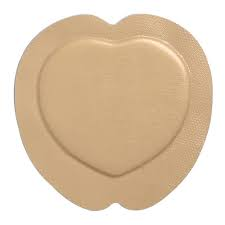Many thanks to wound care nurse Wendy Cardenas, general surgeon Allen Cortez, and wound vac rep Kevin Daly for an informative talk this week on Wounds and Wound Care. I learned so much!
For a recording of their presentation click HERE (starting 11 minutes into the recording)
My notes:
- There are all kinds of wounds: surgical/traumatic, pressure, vascular, diabetic, infectious
- 1.3-3 million Americans are treated for pressure wounds each year
- 60,000 deaths per year are attributed to pressure wounds
- $9.1-11.6 billion dollars spent in the US on pressure wound are alone
- You only need 33 mmHg of pressure to create a pressure wound--> equivalent to a "gentle handshake"
Physician role in wound management
- decrease pressure
- decrease friction/shear forces
- manage incontinence (urinary, fecal>> indwelling/suprapubic catheters, ostomy)
- nutrition! nutrition! nutrition! (protein-calorie, blood sugar control, obesity)
- pain management
- managing comorbidities (DM, tobacco, drug addiction, venous stasis, etc)
- education (patient, caregiver, nursing staff, family)>> "you can tell people what to do, but if you give them the reason why, there is much more acceptance and compliance"
Initial management of wounds
- Identify and treat the cause
- Clean the wound--> tap water is just as good as sterile saline or any other wash (okay to shower day after surgery, no baths). Pulse evacuation (in OR) with fluid and pressure has been shown to improve outcomes. A simple syringe can also help w/debridement
- Keep wounds MOIST to allow capillary ingrowth (not too wet/not too dry)
- Debridement (wet to dry, enzymatic, surgical at bedside or in OR)
- you want to see bleeding
- Optimize nutrition (glucose control, protein)
- Optimize comorbidities (stop smoking!)
- Antibiotics if appropriate--> only if s/sx infection, "use common sense"
- Adjuncts (e.g. iodine/betadine-- can cause tissue damage, which can disrupt healthy granulation tissue. No evidence that adjuncts improve healing).
Q: What is the perfect wound dressing? A: Skin
Wound Vacs
3M Rep, Kevin Daly, then took us through the history of wound vacs (in hospitals since 1995, outside the hospital since 2000) and the range of products that are available, including silver-impregnated foam, special non-adherent dressings (silicone-based) designed to lay between wound and the wound vac (to prevent foam from sticking to the wound), the evolution of the instill vac
What does a wound vac do?
reduces edema around wound
heals wound 60% faster than standard dressing
stretches cells--> leads to degranulation tissue
Contraindications to using a wound vac
No active cancer in the wound
Dead/necrotic tissue in the wound
Untreated osteomyelitis (if osteo is being treated, it is fine)
Dead/necrotic tissue in the wound
Untreated osteomyelitis (if osteo is being treated, it is fine)
Who qualifies for a wound vac at home?
if wound vac was started in the hospital, generally patients can go home with the vac, but a wound vac isn't always the best thing for a patient
wound vacs weigh 8-11 pounds, too heavy for some
need to have home health care (dressing change 3x/week, 1x/week has to be licensed person who measures the wound to demonstrate healing)
must be able to keep wound vac on 22 hours/day
- Of note, patients should be off their wound vac no more than 2 hours/day
- When vac dressings are used in skin grafts, you must use non-adherent dressing between the graft and the foam
- Vac instill: instills fluid (e.g. normal saline) into the wound. Protocol: dwell time 10 minutes, 2 hour suction. Vac instill leads to 40% more granulation tissue than regular wound vac. Only available in acute care (hospital, some LTAC/some SNF
- Prevena vac is used along closed clean incisions, helps approximate the wound. Not for everyone, only place in patients who are high risk for dehiscence (morbid obese, redo). Put on in the OR. Entire product is disposable. When stops holding suction, battery makes noise, it shoudl all get thrown away. No wound care needed, no home health required.
Prevena vac
Our Wound Care Queen, Wendy Cardenas, finished off the presentation with these gems
Four stages of wound healing: hemostasis (immediate)>> inflammatory stage (6 days, WBCs/macrophages debride bioburden) >>proliferation (up to 3 weeks, this is where wounds get stuck, go from acute to chronic)>>maturation (can last up to a year, skin is never going to be exactly the same, always a place that can reopen, tensile strength permanently compromised)
How to approach a wound ala Wendy Cardenas
1) Figure out what happened
chart review, look for all old notes pertaining to wound
ask the patient, "How did this happen?"
check for pressure points
2) Check for infection: is the surrounding tissue hot, red, indurated, painful?
wound bed funky, milky, shiny, smell bad, creamy or copious fluid
3) Foot wounds: pressure, diabetic, venous vs. arterial ulcers
venous: medial/lateral/posterior: irregularly shaped, shallow, yellow slough, not painful>> compress!
arterial: medial/lateral: round, deep, pale bed, don't bleed easily, not much pulse>> no pressure!
4) Wound products you might use in the hospital
foam dressings: prophylactic on sacrum or coccyx, heel + offloading boot
plura-gel: adds hydration, cleans up wound
silver-impregnated hydro-gel
honey: better for superficial wounds
zinc: moisture associated breakdown, good for venous stasis legs (use w/compression)
Additional pearls:
- do NOT ever do superficial cultures on wounds; superficial cultures will only reveal polymicrobial organisms and skin flora
- quantitative tissue cultures are gold standard
- silver is bacteriostatic
- primary closure (clean wound), delayed primary closure (w/steristrips a day or two after), closure w/secondary intention
- skin graft wound vacs STINK when you first remove (5 days after a skin graft)
- if you have an abscess make a BIG BIG hole, making a tiny incision and packing will cause more pain. Big wounds are better





This comment has been removed by a blog administrator.
ReplyDeleteThis comment has been removed by a blog administrator.
ReplyDeleteThis comment has been removed by a blog administrator.
ReplyDelete